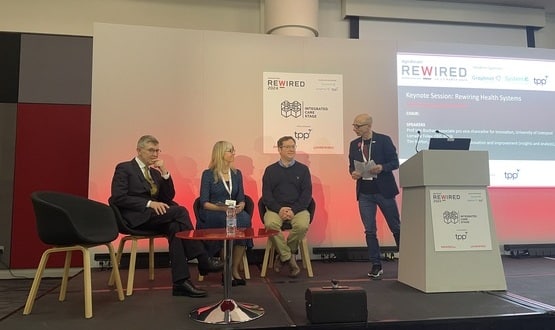Kettering Hospital builds ‘Mary Bot’ to automate Covid reporting
- 12 January 2021

When the Covid-19 pandemic started to take hold, Kettering General Hospital had to find innovative ways to save staff time and streamline services. The solution? Robots, of course.
When thinking about robotics it’s easy for the imagination to take over and before you know it you’re picturing Terminator-style robots, but the solution is far more simple than that.
Kettering set out to use robotic process automation to create the trust’s daily Covid-19 situation report. All hospitals are required to submit a daily situational report including the number of beds available, whether those beds have oxygen available, the equipment available at the hospital and the availability of staff.
It’s a lot of data from several departments that needs to be crunched, often taking up valuable staff time. It’s also data that software is capable of managing which can help free up staff time for patient care.
Ian Roddis, digital director at the trust, told Digital Health: “We are in the business of freeing up the time of staff who are doing repetitive, possibly mundane, and inefficient tasks – we let the software do it for them.
“This then frees up their time to do other tasks and, where we can, give time back to supporting patient care.”
Working with Foundry4 as part of the NHSX AI Lab project, Kettering Hospital launched a robotic process automation that saves an estimated 4,400 staff hours per year – or about £150,000.
Dubbed ‘Mary Bot’, affectionately named after the trust’s IT lead, the system automatically takes data from the hospital’s Medway patient administration system, provided by System C.
It also collates data from the HR system and bed management system, covering the hospitals 50 wards, before producing the Covid-19 situational report to be submitted to NHS England by 11am every day.
All the trust needed to do was provide Mary Bot with a login account to access the data.
“Having electronic sources of this data and having robots fetching it at the right time, we could focus on making sure the right data was input and available for robots to pick up, rather than have folks walking around using paper,” Roddis said.
“The two main things for me were the saving of time to allow human beings to do what human beings do best, but also reduction of error.
“For me, this automation of reporting on patient flow helps clinical decision making. Things like ‘where do I put patients’ or ‘how do I treat them’ or ‘are we meeting patient needs in a timely manner’.”
Implementing a robot
Ciara MacCooey, managing director of automation at Foundry 4, told Digital Health it would be “fairly straightforward” to implement a system like Mary Bot in another trust.
Depending on the complexity of the system required, it takes anywhere between 10 to 25 days to build the robot, MacCooey said.
“We need to work with the IT teams to get the software installed initially, but once we get the software installed and the relevant access in place it’s as simple as creating a user account for the robot in exactly the same way you do for a human,” she said.
“Then it’s over to us to help build that robot.”
To do that Foundry4’s experts sit down with the clinicians or NHS staff usually undertaking the work to learn step-by-step the process they usually go through.
That information is then used to create a process definition document to train the robot to do the tasks in a similar way. Once the trust is happy with the product it is deployed.
“One of the big benefits about robots is they can work 24/7 but also they can work across multiple processes,” MacCooey added.
“So, if you get to a stage where you have 10 or 15 processes you can schedule those processes to run on a daily basis.
“Within those 10 or 15 you may have a few that are critically important, so you can programme the robot to, in the first instance, always focus on these critical processes.”
While Mary Bot streamlines processes required for Covid-19 her skills will last beyond the pandemic.
Kettering Hospital is currently looking at ways robotics can automate GP referrals in outpatient services, allowing patients to be more actively involved in their care.
For Roddis robotic process automation also has the possibility to improve interoperability across trust departments, as well as reducing errors and improving confidence in data.





4 Comments
Considering the report had to be done by 11am each day there must have been a lot of people doing this task such that it saved 4,400 hours by having an automatic data extract… what happened to them I wonder
Not named after Typhoid Mary, then?
Might have been more appropriate!
So Mary Bot is a data warehouse automated report then? – I’m confused why this needed a “bot” apart from that sounds cooler than database extract.
I was thinking the same. I would be too embarassed to admit manual collection. Shows how advance their information management and it departments are! Too funny!
Comments are closed.